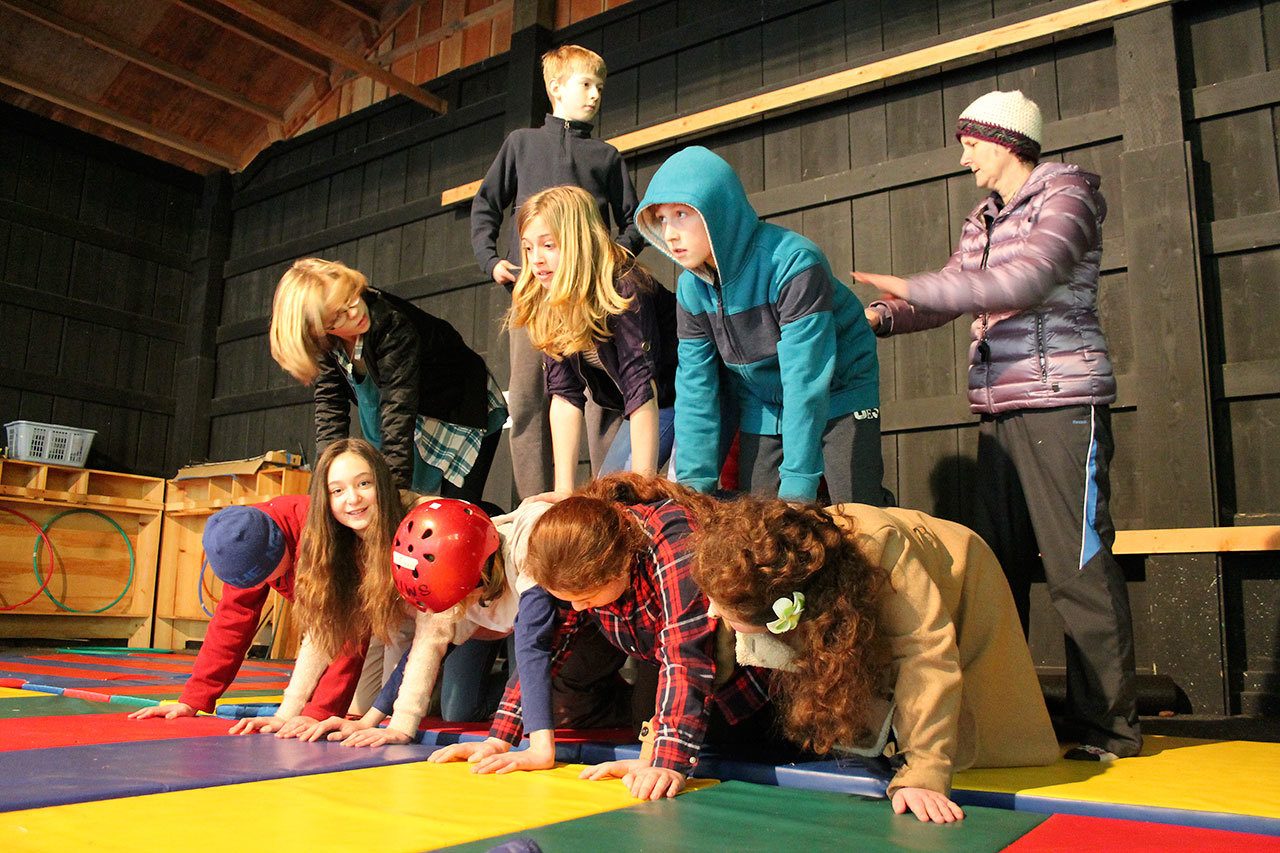It’s nearly 12:45 p.m. on a Monday at Whidbey Island Waldorf School, and 6th grade math class is about to wrap up.
The class grows more excited with each tick of the clock. The anticipation grows not necessarily because of the subject, but because of the next class: circus arts.
That’s right, circus arts.
Circus class sees students swap books and calculators for unicycles, poi (balls on strings), pogo sticks and stilts. The program may seem like nothing more than recess to outsiders, but the curriculum was designed as a means to educate youth in a more engaging way than standardized tests and assignments. Educators at Waldorf say the program is used as a vehicle for the physical, social, emotional and cognitive development of young people. The eight weeks of circus training culminates in an annual Ringling Bros. style performance that includes all students from second to eighth grade.
The upcoming circus performance is 1:15 p.m. to 2:15 p.m. Friday, Feb. 17 at Whidbey Island Waldorf School in Clinton. The performance will be held at Huckleberry Hall on campus.
“Generally, it’s a part of Waldorf Schools to provide movement experiences that are different from the norm,” Games and Movement Teacher Karen Benson said. “We try to put kids against their comfort zones, whether that’s through group games or independent experiences like unicycling.”
Circus curriculum begins in second grade and extends through eighth grade. Students select the circus activity of their choosing — such as diabolo or spinning plates — and attempt to master the activity in eight weeks. Mastering a skill means navigating through four levels of increasing difficulty. Each student is required to pick up a new skill each year, practically becoming carnies by eighth grade. Within five minutes of watching the seventh and eighth grade classes, an onlooker can witness students climb all over each other, juggle four balls at once and form a human pyramid with ease.
According to Benson, the program is a fun way to challenge a student’s abilities and instill a competitive nature, much like sports.
“Circus is all about failing over and over again, and before succeeding they have to figure out that feeling of failure,” Benson said. “All of the students involved in circus tend to have much higher self confidence and are okay with failure because they know they can overcome it.”
The curriculum mixes physical activity with cognitive development. Tumbling and acrobatics is the most clear example of physical activity in the course, as gymnastics improves core strength and flexibility. Unicycle, rolla bolla and stilt walking improves balance, while also helping students overcome any fears they might have of heights or falling. Almost all of the circus activities improve eye-hand coordination, Benson said.
“Depending on what you’re doing, circus gives you a chance to do something really well that other people can’t do,” Kelvin Jenkins, 11, said. “My favorite thing is pogo stick, and I’ve become really good at it. I can show off tricks, too.”
In terms of cognitive development, Benson said studies show there is a correlation between a good sense of balance and math. She added that juggling promotes rhythmic coordination between the two sides of the body and the two sides of the brain. It also promotes ambidexterity.
But the fun and wacky class also breaks down social barriers that become established in some schools. Barriers between grades are often removed during recess when kids can typically be found showing each other their circus skills, with older students often giving pointers to the younger ones. Circus encourages teamwork and trust with collaborative exercises such as human pyramid and team juggling. Gender barriers are broken, Benson says, with an activity she calls family acrobatics, where boys and girls do acrobatics together. It can be hard to find students willing to partake in family acrobatics, but Benson says her classes tend to share a closer bond when they are open to it.
“We really try to pit students against their comfort zones,” Benson said. “I can dial in each kid to see how I can push them farther, and that’s what makes them ultimately challenged.”
Despite all the educational benefits, one thing stood out above all: the students were having fun. Rather than not having one or two students paying attention, all were completely enamored with circus curriculum. That, Benson says, largely comes down to the fun aspect.
“We work on these skills and focus on improving ourselves and being the best we can be,” Sophie Dudley, 12, said. “But most importantly, it’s a lot of fun and I think we’re lucky.”


